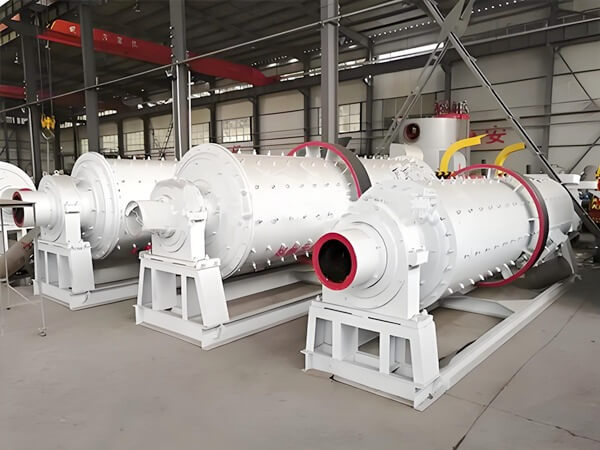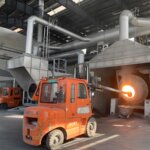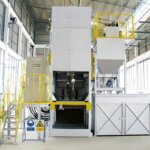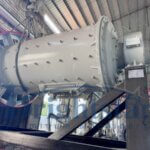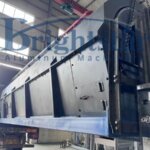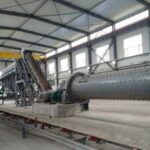Is a Ball Mill the Best for Aluminium Dross Recycling?
Is a Ball Mill the Best for Aluminium Dross Recycling?
Aluminium dross, a byproduct of the aluminium smelting process, contains significant amounts of aluminium, oxides, and other valuable components.
Recycling this material effectively is crucial for minimizing waste, conserving resources, and reducing environmental impact.
Among the many methods for aluminium dross recycling, the ball mill has gained attention for its efficiency and cost-effectiveness.
But is it the best solution?
This blog explores aluminium dross recycling with ball mills, analyzing their advantages, costs, suppliers, and how they compare to alternative methods.
By the end, you’ll have a comprehensive understanding of whether a ball mill is the right choice for your recycling needs.
What is Aluminium Dross?
Aluminium dross is a residue formed during the production of aluminium.
It consists of a mix of aluminium metal, aluminium oxide, salts, and other impurities.
Typically, dross is categorized as:
White Dross: Contains a higher percentage of metallic aluminium.
Black Dross: Contains more oxides and impurities with less recoverable aluminium.
Recycling aluminium dross involves extracting the metallic aluminium and minimizing the waste that ends up in landfills.
Efficient recycling methods can recover up to 90% of aluminium, making it a vital step in sustainable aluminium production.
Aluminium Dross Recycling with Ball Mills
How a Ball Mill Works in Aluminium Dross Recycling
A ball mill is a cylindrical device filled with grinding media, such as steel balls, that tumbles and grinds materials into fine particles.
When applied to aluminium dross recycling, the ball mill crushes the dross, enabling the separation of metallic aluminium from oxides and other residues.
Key steps in the process include:
Loading Dross: Aluminium dross is fed into the ball mill.
Grinding: The mill grinds the material into fine particles, breaking the dross into metallic aluminium and other components.
Separation: Advanced systems separate the fine aluminium particles for further processing, leaving behind oxides and other residues.
Collection: Recovered aluminium is collected for reuse, while waste material is either processed further or disposed of responsibly.
Advantages of Ball Mills for Aluminium Dross Recycling
High Efficiency: Ball mills can achieve fine particle sizes, improving aluminium recovery rates.
Cost-Effectiveness: The operating and maintenance costs of ball mills are relatively low compared to other machinery.
Compact Design: Ball mills require less space compared to some alternative equipment.
Simplicity: They are straightforward to operate and maintain.
Versatility: Ball mills can handle various types of dross, from white to black, making them suitable for diverse applications.
Aluminium Dross Ball Mill Setup Cost
Setting up a ball mill for aluminium dross recycling involves several considerations.
The cost depends on factors such as the mill’s capacity, design, and additional equipment required for processing and separation.
Below is a breakdown of potential costs:
Ball Mill Cost:
Small-scale mills: $10,000–$50,000
Industrial-scale mills: $100,000–$500,000
Support Equipment:
Feeders, separators, and dust collectors: $20,000–$100,000
Installation and Infrastructure:
Site preparation, electrical setup, and foundation work: $10,000–$50,000
Operational Costs:
Energy consumption, maintenance, and labor: Varies depending on usage and efficiency.
Return on Investment (ROI)
Although the initial investment in a ball mill setup can be significant, the long-term benefits often justify the cost.
High aluminium recovery rates lead to savings on raw material costs, and the ability to recycle dross efficiently reduces environmental compliance costs and waste disposal fees.
Aluminium Dross Ball Mill vs. Alternative Recycling Methods
While ball mills are popular, they are not the only method for recycling aluminium dross. Here’s a comparison of ball mills with alternative technologies:
1. Rotary Furnace
Process: A rotary furnace melts the dross to separate metallic aluminium.
Advantages: High aluminium recovery rates, effective for large-scale operations.
Disadvantages: High energy consumption, significant setup cost, and environmental concerns from emissions.
2. Salt Slag Treatment
Process: Involves the addition of salts to dross to separate aluminium.
Advantages: Effective separation of aluminium and oxides.
Disadvantages: Generates toxic salt residues that require careful disposal.
3. Plasma Torch Systems
Process: Uses high-temperature plasma to vaporize and separate materials.
Advantages: Innovative and clean technology.
Disadvantages: Extremely high cost, limited scalability for dross recycling.
4. Manual Sorting
Process: Involves manual separation of aluminium from dross.
Advantages: Low initial investment.
Disadvantages: Labor-intensive, low recovery rates, and inefficient for large-scale operations.
Why Ball Mills Stand Out
Ball mills strike a balance between efficiency and cost.
They are particularly suited for small to medium-sized operations where high aluminium recovery rates are needed without the high energy costs associated with furnaces or plasma systems.
Aluminium Dross Ball Mill for Sale
If you’re in the market for a ball mill for aluminium dross recycling, here’s what to consider:
Features to Look For:
Capacity: Match the mill’s capacity with your processing needs.
Energy Efficiency: Opt for models with low power consumption.
Durability: Ensure the mill is made of high-quality materials to withstand abrasive dross.
Automation: Advanced models offer automated systems for feeding, grinding, and separating.
Maintenance: Look for equipment that’s easy to maintain and comes with strong after-sales support.
Where to Buy:
Directly from Manufacturers: Suppliers like Brightstar Aluminum Machinery often offer better pricing and customization options.
Online Marketplaces: Websites like Alibaba and Globalsources list ball mills from various suppliers worldwide.
Used Equipment Dealers: For cost-saving options, consider used ball mills from reputable dealers.
Final Thoughts: Is a Ball Mill the Best for Aluminium Dross Recycling?
The answer depends on your specific needs and operational scale.
Ball mills are highly efficient and cost-effective for recycling aluminium dross, especially for small to medium-sized operations.
Their simplicity, compact design, and high aluminium recovery rates make them an attractive option.
However, for larger-scale operations or specialized applications, alternatives like rotary furnaces or salt slag treatment might be more suitable despite their higher costs.
Ultimately, a thorough cost-benefit analysis is essential to determine whether a ball mill is the best solution for your aluminium dross recycling process.
Would you like to explore more about setting up a ball mill or compare costs in greater detail? Let us know in the comments!
Disclaimer: Ensure compliance with local environmental regulations and waste disposal guidelines when selecting and operating recycling equipment.

